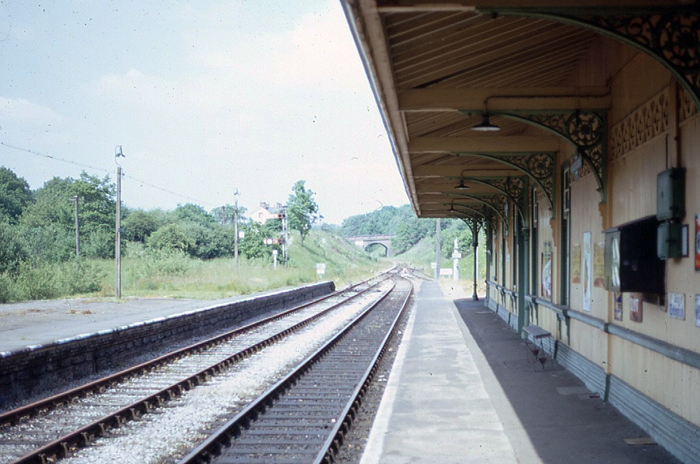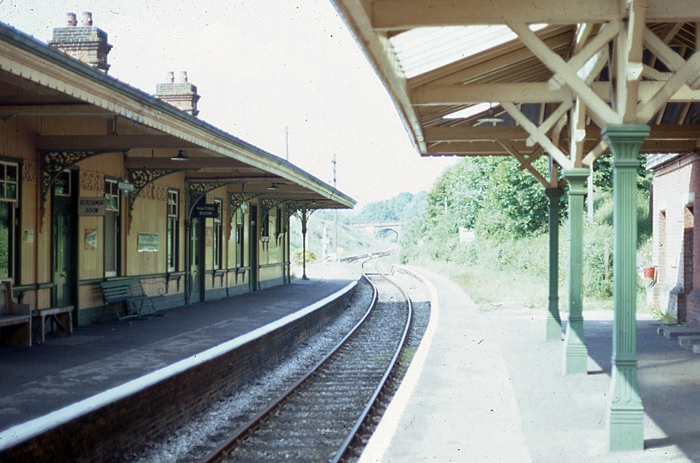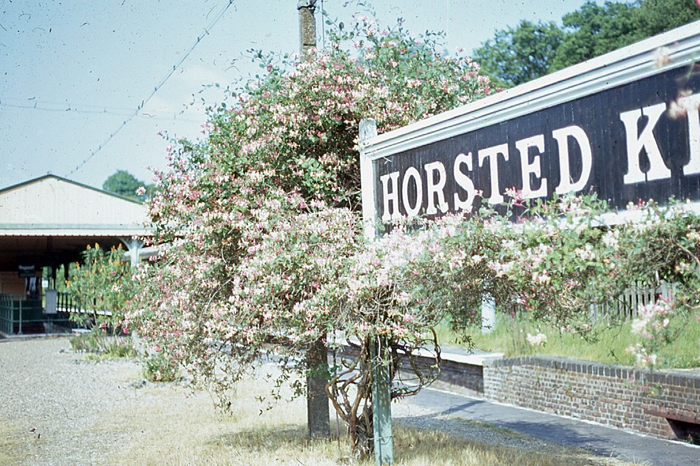
Horsted Keynes
Bluebell & Primrose Line
The northern part of
the Bluebell & Primrose line gained importance during World War II, for it was
potentially a crucial, and not overly circuitous, diversionary route between
London and the Sussex Coast, should the main Brighton Line north of Haywards
Heath be bomb damaged. After the conflict, however, it was the same old story
for the line, with low passenger numbers and an air of neglect at stations –
the route had never been a heavy carrier from the outset. Goods traffic along the
line was also dwindling, as road transport took over, and the electric service
provided at Horsted Keynes was in effect just run for convenience of stock
movements away from the Brighton trunk route, rather than for the benefit of
passengers. The end was nigh, and BR advertised the closure of the Bluebell &
Primrose line between East Grinstead and Lewes for 13th June 1955.
Unfortunately, closure came earlier, and without ceremony, on 28th May, as a
result of planned strike action. However, it was not the end for Horsted Keynes:
this station remained operational beyond line closure, solely to serve the still
extant electric service over the Ardingly spur to Seaford, in addition to
remaining goods traffic. It became a
decidedly isolated, obscure appendix of the electrified Central Division.
It was not over for the closed Bluebell & Primrose route, and British Railways
fell foul to the original Act of Parliament of 1878. An eagle-eyed resident of
Chailey had discovered that within this Act was enshrined the condition that at
least four trains each way, per day, had to be run along the line in perpetuity.
The only way to legitimately negate this ruling was to repeal the 1878 Act. In
the meantime, BR was compelled to run this meagre service timetable, which, as
per the trains up to 1955, was poorly patronised: the line subsequently
re-opened on 7th August 1956. BR obtained the necessary powers from Parliament,
and the East Grinstead to Lewes route closed for the second time on 16th March
1958, this time with much ceremony. Once again, Horsted Keynes still remained on
BR’s books as operational, for it continued to serve the terminating electric
train from Seaford.
In March 1959, the ‘’Bluebell Railway Preservation Society’’
(BRPS) was formed, with the aim of restoring services between Sheffield Park and
the southern fringes of the Horsted Keynes approaches (the station there still
being under BR control). BR wanted £34,000 for the 4½-mile-long track bed and
its associated infrastructure – £569,580 at 2007 prices. Lacking such a huge
sum, the preservation society instead reached an agreement with BR for the lease
of the line, at an annual rate of £1,850 (£30,990 at 2007 prices) for five
years, spanning 1960 to 1965 inclusive. This price was in addition to £13 a year
rent for the booking office at Sheffield Park – £218 at 2007 prices. This section
of line was formally reopened to steam services under the auspices of the BRPS
on 7th August 1960, a Light Railway Order having been acquired on 9th of the
previous month. Preserved steam services reached Horsted Keynes station on 29th
September 1961, but a BR pilot was required to accompany the engine crew on the
footplate. Goods facilities were withdrawn on 5th March of the following year.
The Horsted Keynes to Seaford electric service last ran on 28th October 1963,
and closure of the spur between the former and Copyhold Junction occurred. BR’s
asking price for the stretch of line between Sheffield Park and Horsted Keynes
had risen to £43,500 (£656,110 at 2007 prices), now that the station at the latter
was to be included within the sale. BR had declared that once the five-year
lease ran out, renewal was not an option – only an outright purchase would be
accepted. Frantic fundraising took place from 1964 onwards, and the required sum
was raised to allow the purchase of the line by the BRPS in 1968.
June 1967

Another northward view shows that the area to the west of the ''up'' island had completely returned to nature. Although the platform line on that side had been abolished as long ago as World War I, a single siding had been maintained until the end of BR operation. © David Glasspool Collection
June 1967

A distinctive characteristic of this station is the single line served on either side by platform faces. This was also once a feature of Norwood Junction, Sevenoaks Tubs Hill and, indeed, can still be witnessed in Somerset at Yeovil Pen Mill. Notice here that the island canopy has been equipped with ornate iron brackets, whilst the supports for the cover on the eastern-most platform are wholly timber in construction. © David Glasspool Collection
June 1967

The vertical striped pattern of the ''down'' island's southern running-in board reveals this is of timber construction, although the posts either side are fabricated from metal. © David Glasspool Collection
Return to the Kent Rail Homepage or alternatively, check for Updates.
Website & Copyright information - Links - Contact the Webmaster
All content is copyright © David Glasspool unless otherwise stated